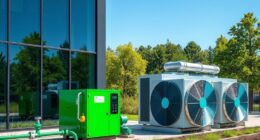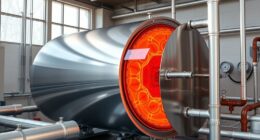We are thrilled to reveal the latest trend in commercial architecture: heat pump technology. These innovative systems are revolutionizing HVAC solutions in commercial spaces, akin to a cool breeze.
With their energy efficiency and cost savings, heat pumps are changing the game for businesses. Get ready to dive into the world of heat pumps and discover how they maximize comfort, reduce environmental impact, and shape the future of commercial real estate.
Let’s explore the inside scoop on commercial buildings embracing heat pump tech.
Key Takeaways
- Heat pumps in commercial buildings offer energy savings, reduced carbon emissions, and improved indoor air quality.
- They provide both heating and cooling capabilities, reducing reliance on traditional heating and cooling methods.
- Heat pumps contribute to a more sustainable and environmentally friendly approach to heating and cooling.
- They can lead to significant cost savings through reduced energy consumption, lower maintenance requirements, and incentives/rebates for energy-efficient systems.
The Rise of Heat Pumps in Commercial Buildings
We’ve seen a significant increase in the adoption of heat pumps in commercial buildings. This trend is driven by the numerous benefits of heat pump adoption, such as energy savings, reduced carbon emissions, and improved indoor air quality. Heat pumps are highly efficient HVAC systems that can provide both heating and cooling, making them versatile and cost-effective solutions for commercial buildings.

However, implementing heat pumps in commercial buildings does come with its own set of challenges. One major challenge is the initial cost of installation, which can be higher compared to traditional HVAC systems. Additionally, retrofitting existing buildings with heat pumps may require modifications to the building’s infrastructure, such as ductwork or electrical systems. This can lead to additional costs and logistical challenges.
Furthermore, heat pumps rely on electricity, so adequate electrical capacity must be available to support their operation. This may require upgrades to the building’s electrical system. Lastly, proper maintenance and regular servicing are crucial to ensure the optimal performance and longevity of heat pumps.
Despite these challenges, the benefits of heat pump adoption in commercial buildings far outweigh the difficulties. With careful planning and consideration, the widespread implementation of heat pumps can lead to significant energy savings and a more sustainable future for commercial buildings.
Benefits of Heat Pump Technology in Commercial Settings
Our research has revealed the significant benefits of heat pump technology in commercial settings, including increased energy efficiency and cost savings. Heat pumps are designed to transfer heat from one space to another, rather than generating heat through combustion or electrical resistance. This process allows for the efficient utilization of energy, resulting in lower energy consumption and reduced operating costs.

Heat pumps also offer the advantage of being able to provide both heating and cooling capabilities, eliminating the need for separate systems. By maximizing efficiency and optimizing performance, heat pumps contribute to a more sustainable and environmentally friendly approach to heating and cooling in commercial buildings.
In the subsequent section, we’ll explore how heat pumps are revolutionizing commercial HVAC systems, further highlighting their advantages and potential for future advancements.
How Heat Pumps Are Revolutionizing Commercial HVAC Systems
Heat pumps are transforming commercial HVAC systems in several ways.
Firstly, these systems offer significant energy efficiency benefits, allowing buildings to reduce their energy consumption and operating costs.

Secondly, heat pumps have the potential to deliver substantial cost savings by reducing the reliance on traditional heating and cooling methods.
Lastly, the adoption of heat pump technology in commercial buildings also plays a crucial role in reducing the environmental impact by lowering greenhouse gas emissions and promoting sustainability.
Energy Efficiency Benefits
As commercial buildings embrace heat pump technology, they are experiencing significant energy efficiency benefits. Heat pumps offer a cost-effective solution for heating and cooling commercial spaces, resulting in reduced energy consumption and lower utility bills. One of the key advantages of heat pumps is their ability to transfer heat rather than generate it, which makes them highly efficient. This means that for every unit of electricity consumed, a heat pump can produce more than one unit of heating or cooling. The energy efficiency benefits of heat pumps are further enhanced by their ability to extract heat from the air, ground, or water, depending on the type of heat pump used. This versatility allows for optimal energy utilization, resulting in substantial cost savings potential for commercial buildings.
| Energy Efficiency Benefits | Cost Savings Potential |
|---|---|
| Reduced energy consumption | Lower utility bills |
| High efficiency | Optimal energy utilization |
Cost Savings Potential
By utilizing heat pump technology, commercial buildings can achieve significant cost savings potential for their HVAC systems. Heat pumps use a small amount of electricity to transfer heat from one place to another, rather than generating heat directly, making them highly energy efficient. This efficiency translates into cost savings for commercial buildings, which can be further enhanced through a thorough cost analysis and consideration of the return on investment.
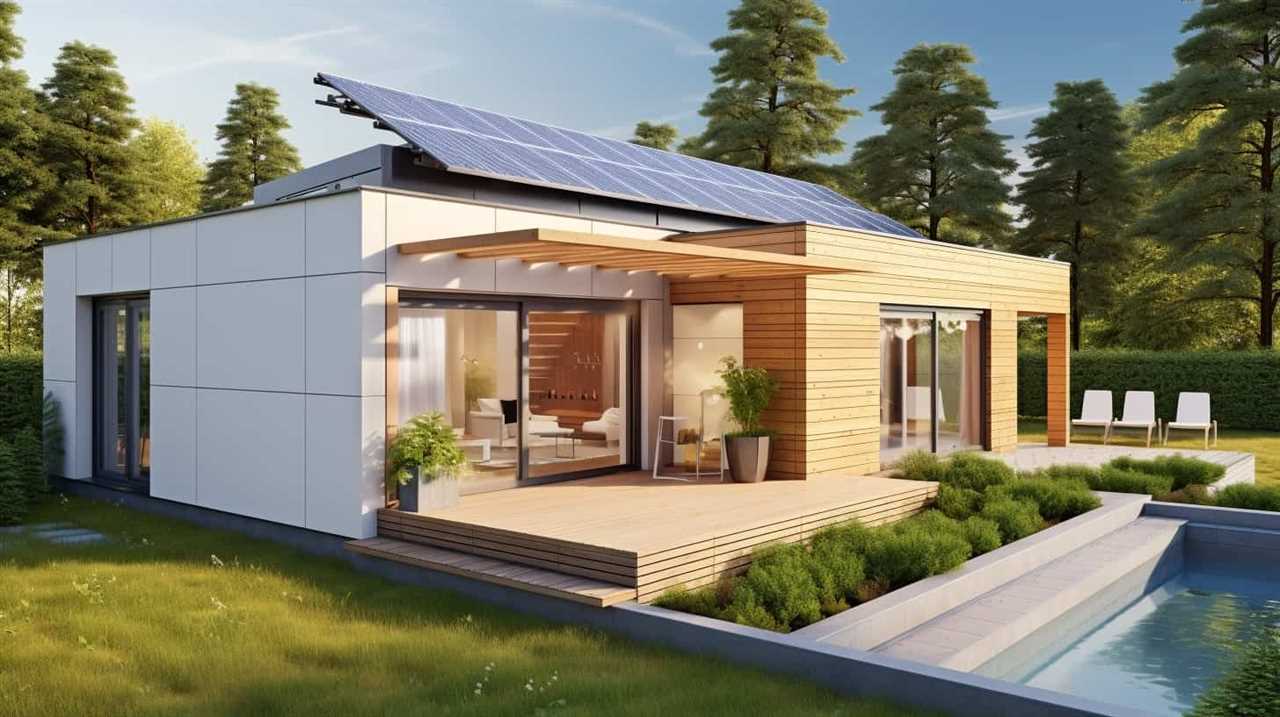
Here are three ways that heat pumps can revolutionize commercial HVAC systems and lead to cost savings:
-
Reduced energy consumption: Heat pumps can provide both heating and cooling, eliminating the need for separate systems and reducing overall energy usage.
-
Lower operating costs: Heat pumps have lower maintenance requirements and longer lifespans compared to traditional HVAC systems, resulting in reduced operating costs over time.
-
Incentives and rebates: Many governments and utility companies offer incentives and rebates for the installation of energy-efficient heat pump systems, further reducing the upfront cost and improving the return on investment.
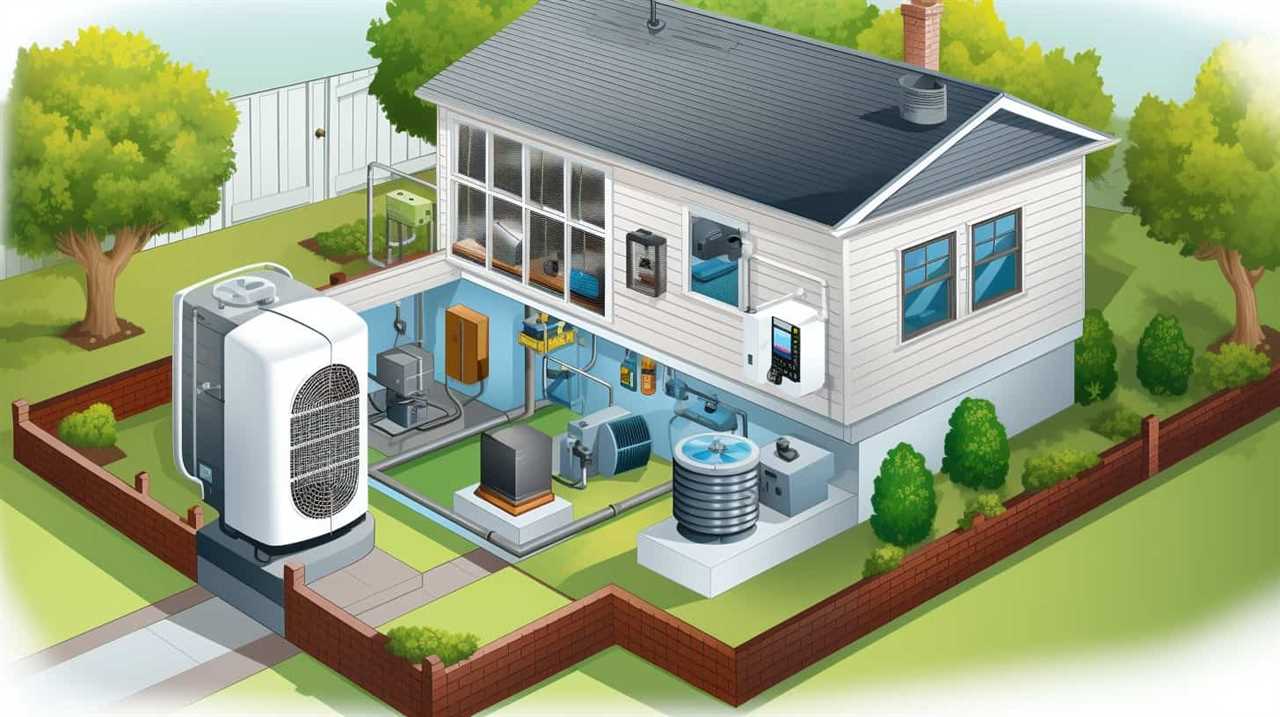
Environmental Impact Reduction
To further understand the environmental impact reduction of heat pump technology, let’s explore how commercial HVAC systems are being revolutionized. Heat pumps offer sustainable HVAC solutions that significantly reduce carbon footprints in commercial buildings. By harnessing the natural heat from the air or ground and transferring it indoors, heat pumps eliminate the need for traditional heating methods that rely on fossil fuels. This not only reduces greenhouse gas emissions, but also decreases energy consumption and operating costs. To illustrate the environmental benefits of heat pumps, consider the following table:
| Traditional HVAC System | Heat Pump System |
|---|---|
| Relies on fossil fuels | Utilizes renewable energy sources |
| Generates carbon emissions | Reduces carbon footprint |
| Consumes more energy | Requires less energy |
| Higher operating costs | Lower operating costs |
As the table demonstrates, heat pump technology presents a viable and sustainable solution for commercial buildings, enabling them to contribute to a greener and more environmentally friendly future while also enjoying long-term cost savings.
Energy Efficiency: A Game Changer for Commercial Buildings
We believe that implementing energy-efficient measures is a significant step in transforming commercial buildings into more sustainable and cost-effective spaces. By adopting game-changing technologies and energy-efficient solutions, commercial buildings can’t only reduce their environmental impact but also save on operational costs.
Here are three key ways energy efficiency is revolutionizing the commercial building sector:
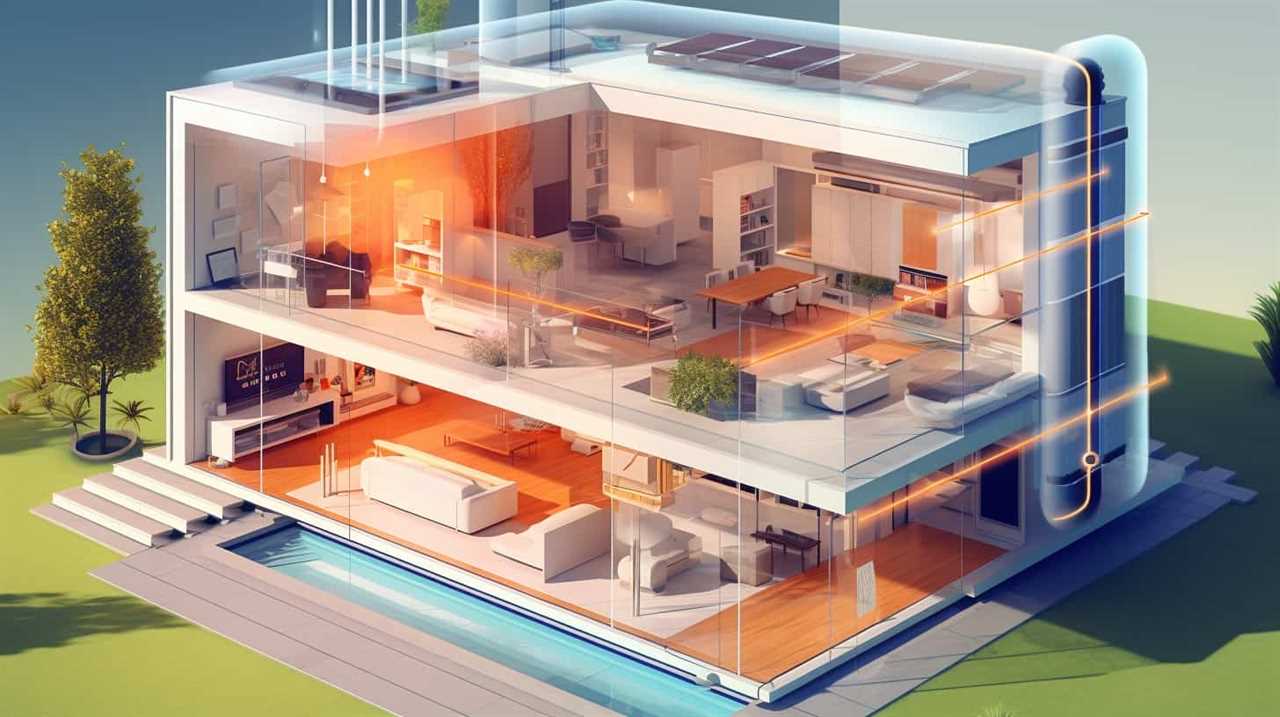
-
Smart building automation systems: These advanced systems enable centralized control and monitoring of various building functions, such as lighting, HVAC, and security. By optimizing energy usage based on occupancy and environmental conditions, these systems can significantly reduce energy waste.
-
Efficient lighting solutions: Upgrading to LED lighting not only consumes less energy but also has a longer lifespan, reducing maintenance costs. Additionally, implementing smart lighting controls, such as occupancy sensors and daylight harvesting, ensures lighting is only used when needed.
-
High-performance insulation and windows: Insulating commercial buildings and installing energy-efficient windows can prevent heat loss or gain, reducing the need for excessive heating or cooling. This not only lowers energy consumption but also improves occupant comfort.
Exploring the Cost Savings of Heat Pump Technology in Commercial Settings
As we delve deeper into the cost savings of heat pump technology in commercial settings, it becomes evident that this innovative solution offers significant opportunities for reducing energy expenses and improving overall operational efficiency.
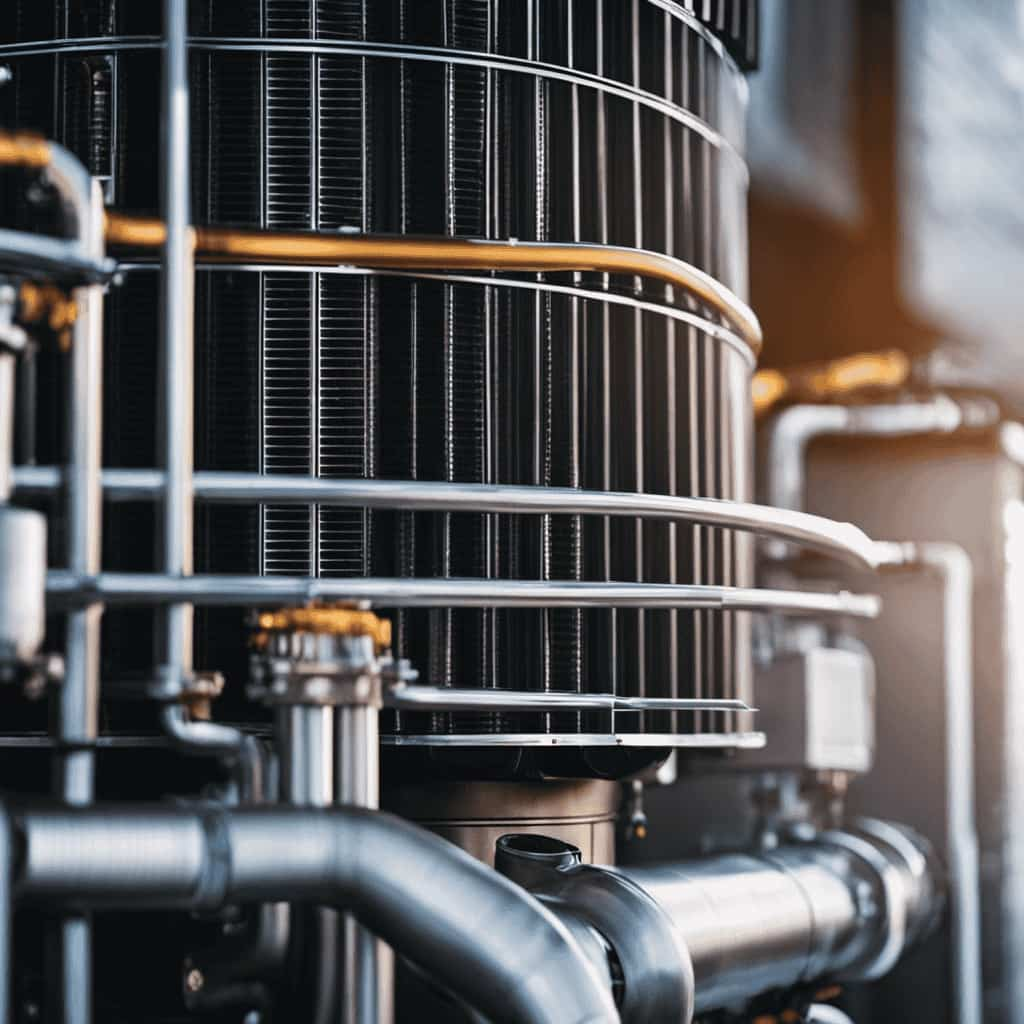
To fully understand the potential cost savings, conducting an energy consumption analysis is crucial. This analysis involves evaluating the current energy usage of the building and comparing it to the projected energy consumption with the implementation of heat pump technology. By quantifying the energy savings, businesses can make informed decisions about investing in heat pump systems.
Additionally, conducting a return on investment analysis is essential in determining the financial benefits of heat pumps. This analysis considers the upfront costs of installation and maintenance, the projected energy savings, and the lifespan of the heat pump system to calculate the payback period and overall return on investment.
Overcoming Challenges: Implementing Heat Pump Systems in Large-scale Buildings
Despite the challenges, we’ve successfully implemented heat pump systems in large-scale buildings, revolutionizing their energy efficiency and reducing operational costs. Overcoming these challenges required careful planning and strategic implementation strategies. Here are three key strategies we employed:
-
Thorough Building Assessment: We conducted a comprehensive assessment of each building to determine its specific needs and potential obstacles. This allowed us to develop customized solutions tailored to each building’s requirements.

-
System Sizing and Integration: Accurate sizing of the heat pump system was crucial to ensure optimal performance and efficiency. We carefully integrated the heat pump system with existing infrastructure, taking into account factors such as load calculations, ductwork design, and control systems.
-
Staff Training and Support: We provided extensive training and ongoing support to building staff to ensure they understood the new system and could effectively operate and maintain it. This proactive approach helped to minimize downtime and maximize the system’s longevity.
By implementing these strategies, we successfully overcame challenges and achieved the seamless integration of heat pump systems in large-scale buildings.
Now, let’s delve into some case studies that highlight the successful integration of heat pumps in commercial properties.

Case Studies: Successful Integration of Heat Pumps in Commercial Properties
Through meticulous planning and strategic implementation, we successfully integrated heat pumps in commercial properties, improving energy efficiency and reducing operational costs.
In our case studies, we encountered various integration challenges, but with careful consideration and expertise, we overcame them to achieve optimal results.
One challenge we faced was the compatibility of existing HVAC systems with heat pumps. By conducting thorough assessments and making necessary modifications, we were able to seamlessly integrate heat pumps into the existing infrastructure.
Another challenge was the size and layout of the commercial properties, which required us to design customized solutions that maximized space utilization and ensured efficient heat distribution.
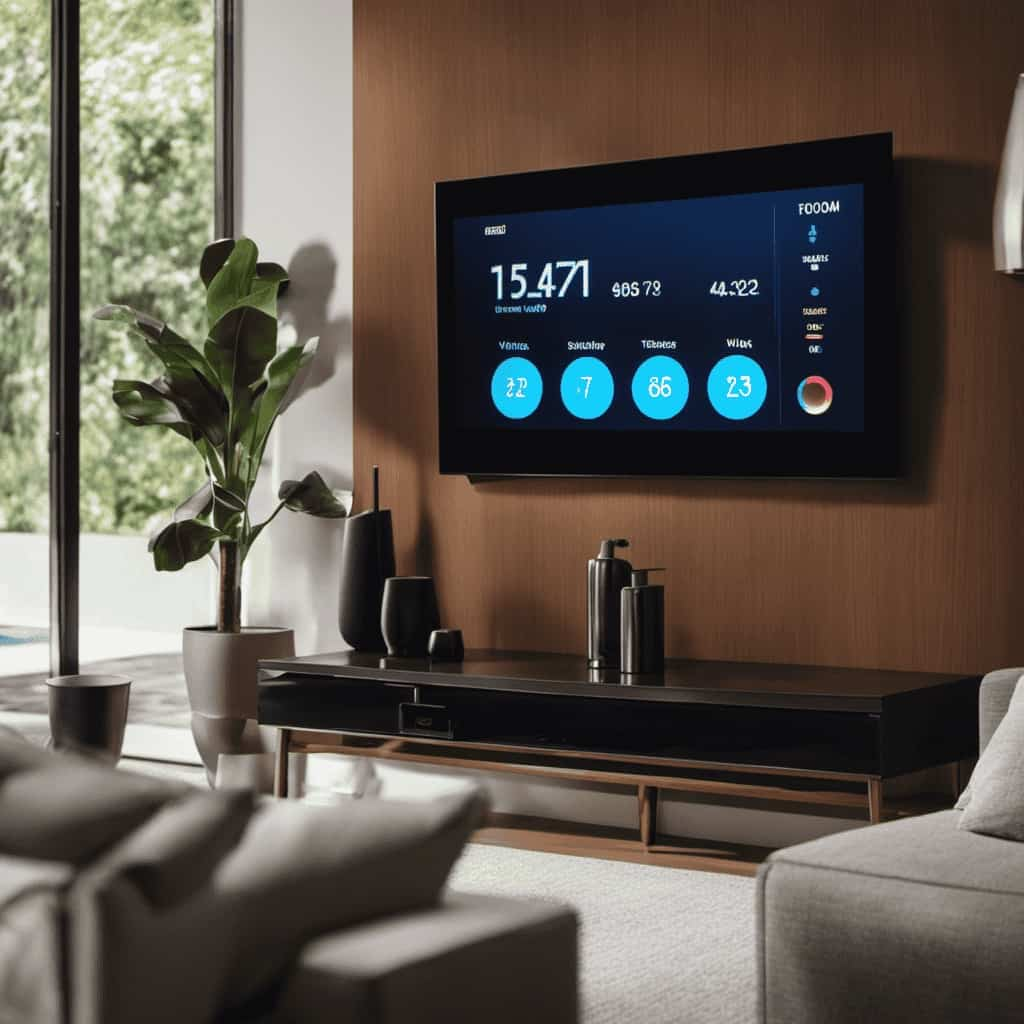
These successful case studies demonstrate our ability to overcome integration challenges and provide practical solutions for commercial properties.
As we delve into the next section, we’ll explore how heat pump solutions can further maximize comfort in commercial spaces.
Maximizing Comfort: Heat Pump Solutions for Commercial Spaces
When it comes to maximizing comfort in commercial spaces, heat pump solutions offer several key benefits.
Firstly, heat pumps are highly energy efficient, allowing for significant reductions in energy consumption and lower utility costs.

Additionally, the cost savings potential of heat pump technology is substantial, making it an attractive option for businesses looking to optimize their operational expenses.
Lastly, heat pumps offer flexible installation options, allowing for customization to meet the specific needs and requirements of various commercial spaces.
Energy Efficiency Benefits
By utilizing heat pump technology, we can greatly enhance the energy efficiency of commercial spaces, maximizing comfort and reducing operating costs. Heat pumps offer several energy efficiency benefits, including:
-
Improved Performance: Heat pumps are designed to efficiently transfer heat from one space to another, resulting in reduced energy consumption and lower utility bills. They provide both heating and cooling capabilities, eliminating the need for separate systems and optimizing energy efficiency.
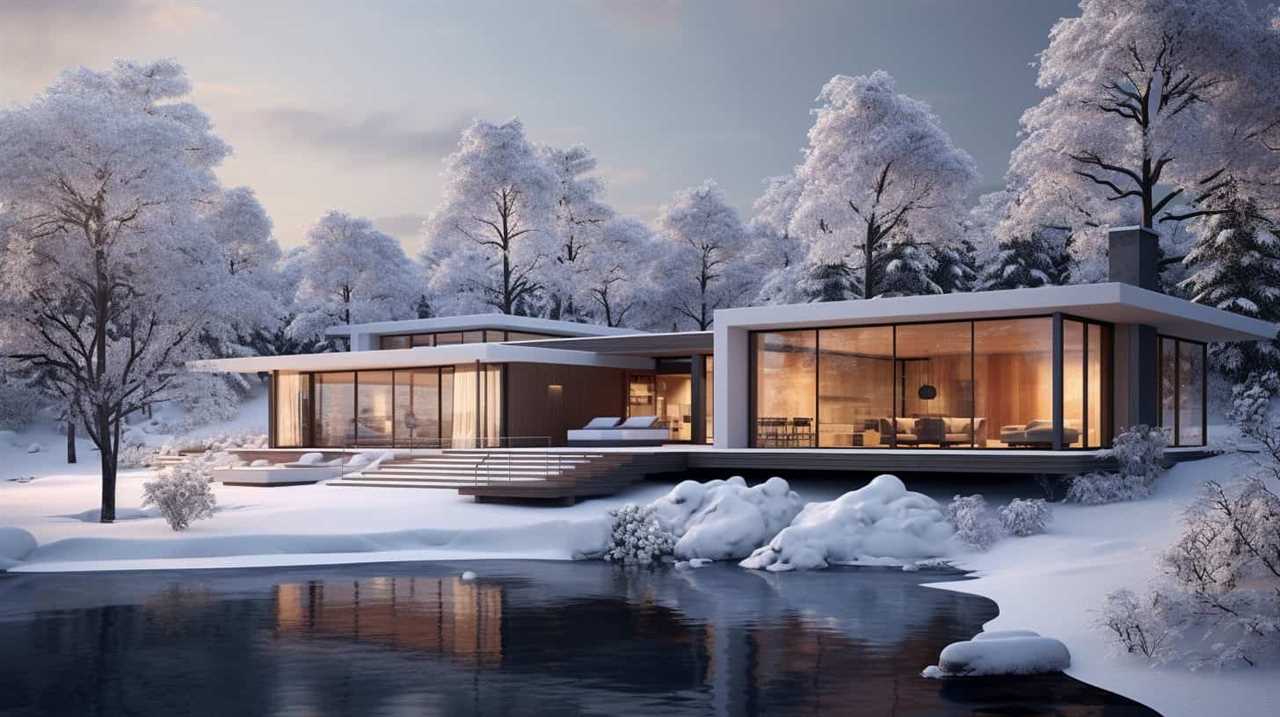
-
Cost Savings Potential: With their high energy efficiency ratings, heat pumps can lead to significant cost savings for commercial buildings. By reducing energy consumption, businesses can lower their operating costs and allocate those savings towards other areas of their operations.
-
Environmental Friendliness: Heat pumps use renewable energy sources, such as air or ground heat, to provide heating and cooling. This reduces reliance on fossil fuels and helps businesses reduce their carbon footprint, contributing to a sustainable future.
Incorporating heat pump technology in commercial spaces not only improves energy efficiency but also brings about substantial cost savings potential, making it a smart choice for businesses looking to serve their customers while being environmentally responsible.
Cost Savings Potential
To achieve maximum comfort and save costs, we can explore heat pump solutions for commercial spaces. Heat pumps offer significant potential savings and a high return on investment for businesses.

By utilizing the natural heat transfer process, heat pumps can extract heat from the air or ground and transfer it to the desired space, providing efficient heating during the winter months. This process can be reversed during the summer to provide cooling, ensuring year-round comfort.
The energy efficiency of heat pumps also reduces energy consumption and lowers utility bills, resulting in substantial cost savings over time. Additionally, heat pumps require less maintenance compared to traditional HVAC systems, further reducing operating costs.
Investing in heat pump technology is a smart decision for commercial spaces, as it not only maximizes comfort but also offers significant potential savings and a quick return on investment.
Flexible Installation Options
We have various flexible installation options available for maximizing comfort with heat pump solutions in commercial spaces. Our heat pump systems offer great flexibility in design, allowing for versatile applications in a wide range of commercial buildings.
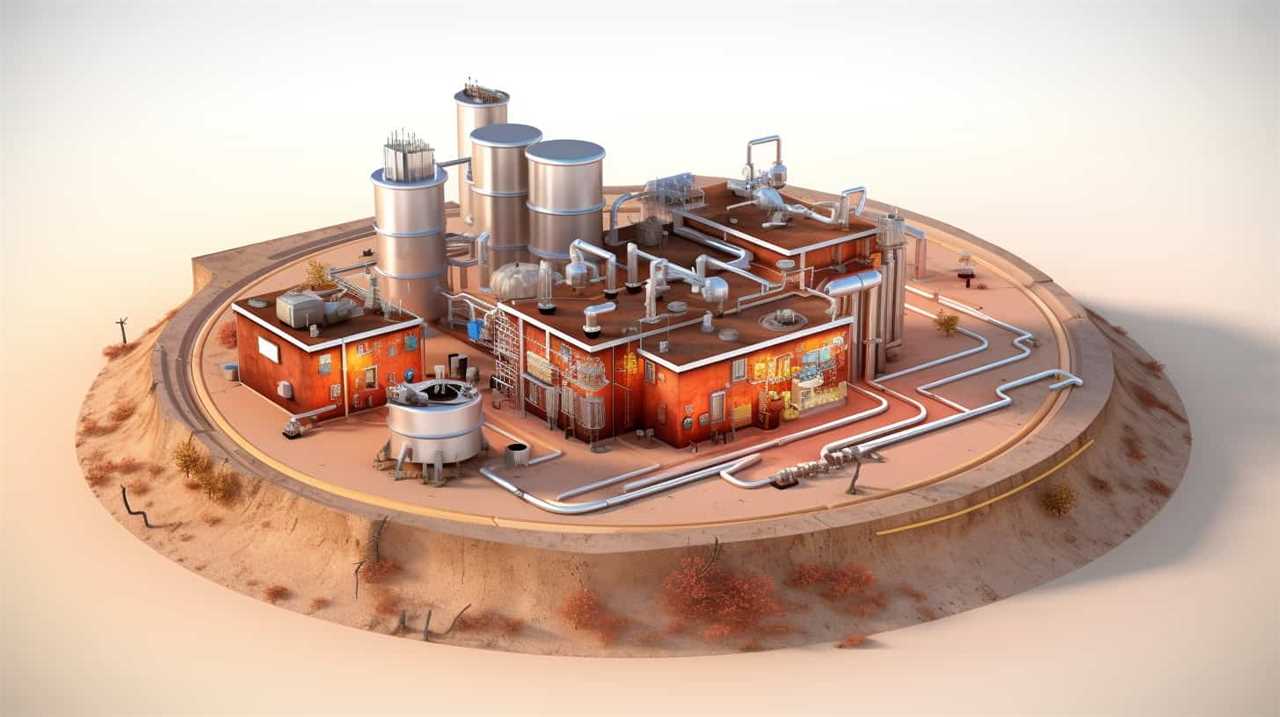
Here are three key installation options to consider:
-
Ducted Systems: This option involves installing a network of air ducts throughout the building, allowing for even distribution of heated or cooled air. Ducted systems are ideal for larger commercial spaces where consistent temperature control is required.
-
Ductless Mini-Split Systems: These systems are perfect for smaller commercial spaces or areas with limited installation options. They consist of an outdoor unit and one or more indoor units, connected by a refrigerant line. Ductless mini-split systems offer zone control and can be installed quickly and easily.
-
Water Source Heat Pumps: This option utilizes a water loop system to transfer heat to or from the building. Water source heat pumps are highly efficient and can be integrated with other HVAC systems. They’re particularly suitable for buildings with access to a water source.
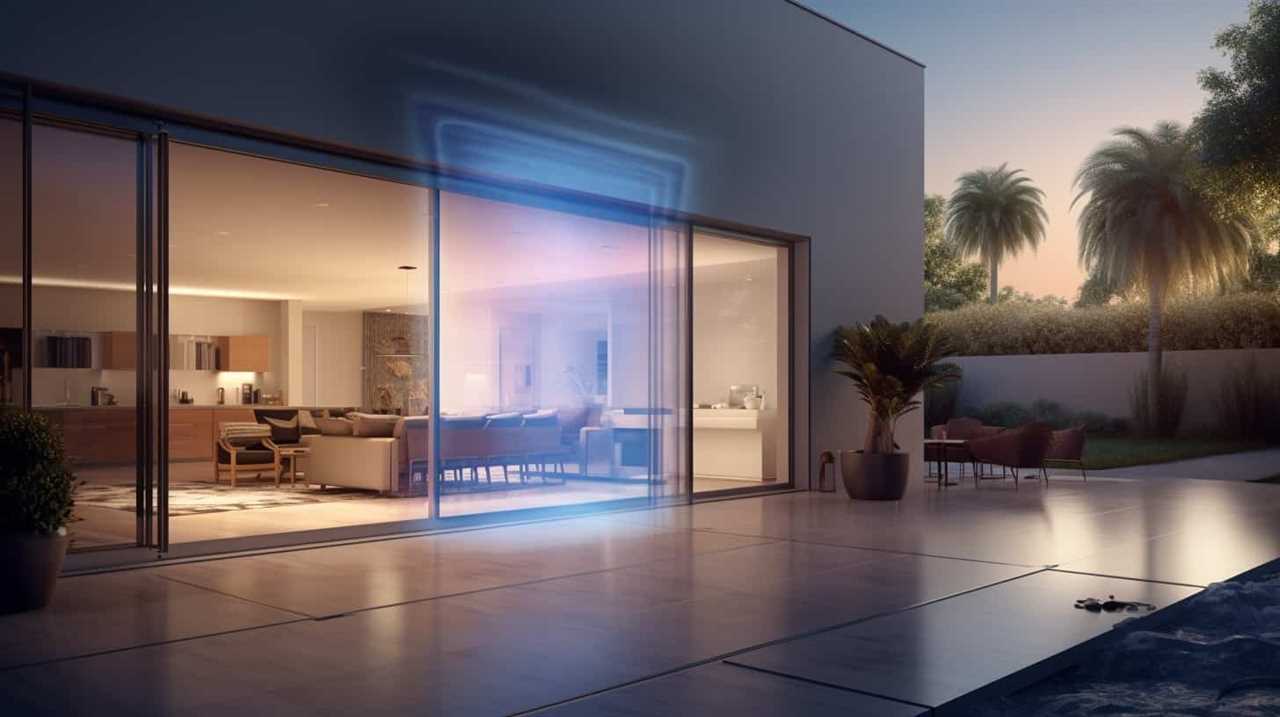
Environmental Impact: Heat Pump Technology and Sustainability in Commercial Buildings
Since heat pump technology offers sustainable solutions, our commercial buildings can significantly reduce their environmental impact. Heat pumps are known for their energy efficiency, as they transfer heat from one space to another instead of generating it. This reduces the reliance on fossil fuels and lowers greenhouse gas emissions, thereby decreasing the carbon footprint of commercial buildings. Additionally, heat pump technology provides numerous benefits for indoor air quality. By continuously circulating and filtering the air, heat pumps remove pollutants and allergens, creating a healthier and more comfortable environment for occupants. To illustrate the environmental impact of heat pump technology in commercial buildings, consider the following table:
| Environmental Impact | Heat Pump Technology |
|---|---|
| Reduces carbon footprint | ✓ |
| Lowers greenhouse gas emissions | ✓ |
| Improves indoor air quality | ✓ |
The Future of Heat Pump Technology in Commercial Real Estate
As we look to the future of heat pump technology in commercial real estate, it’s crucial to consider the energy efficiency benefits and potential cost savings.
Heat pumps have already proven their ability to significantly reduce energy consumption and greenhouse gas emissions in commercial buildings.
With advancements in technology and increased adoption, we can expect even greater energy savings and cost-effectiveness in the coming years.

Energy Efficiency Benefits
The energy efficiency benefits of heat pump technology in commercial real estate are significant and offer promising advancements for the future. With the growing focus on sustainability and reducing carbon emissions, heat pumps are becoming a popular choice for commercial buildings.
Here are three key energy efficiency benefits of heat pump technology:
-
Reduced energy consumption: Heat pumps use renewable energy sources such as air, water, and ground to provide heating and cooling. This significantly reduces the reliance on fossil fuels and lowers energy consumption.
-
Improved system efficiency: Heat pumps have high Coefficient of Performance (COP), which means they can produce more heat or cooling energy for the same amount of electricity input. This results in lower energy bills and reduced environmental impact.
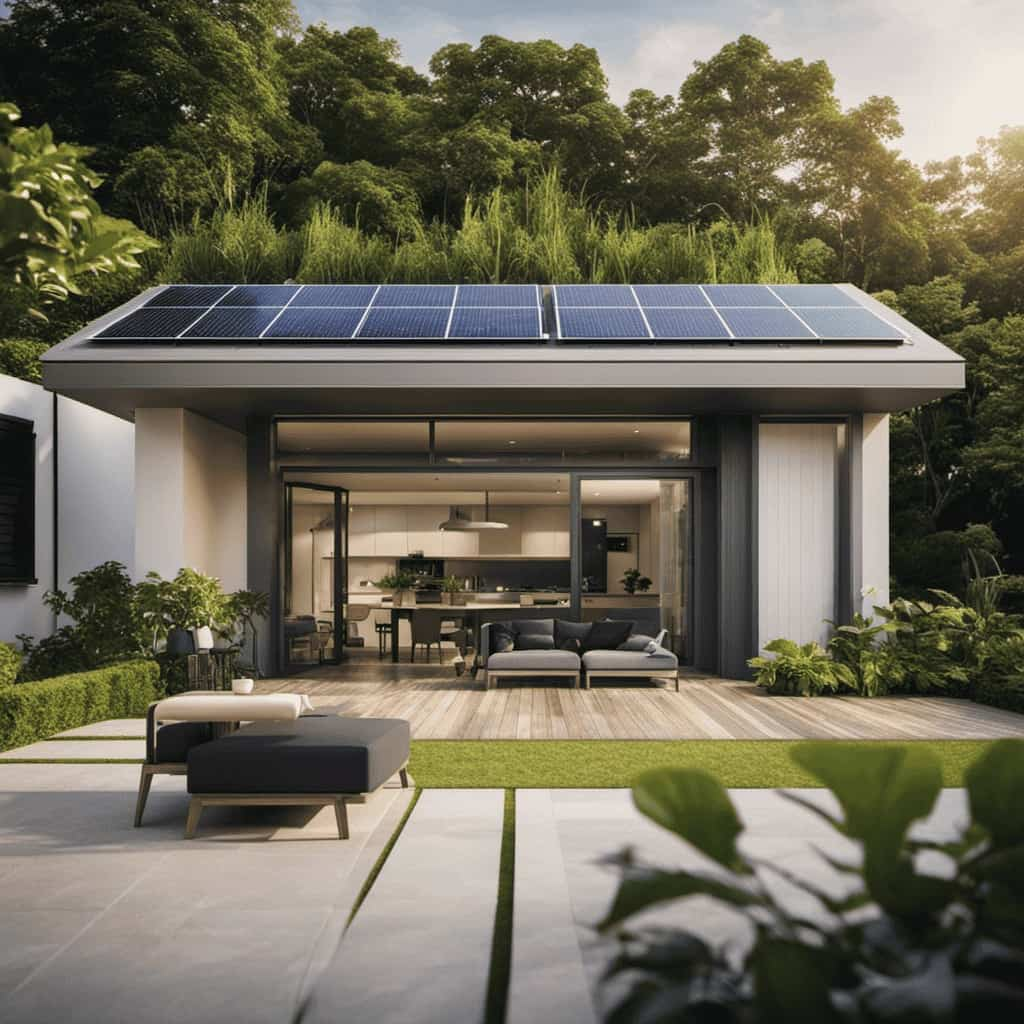
-
Waste heat recovery: Some heat pump systems can capture waste heat from other processes and reuse it for space heating or hot water production. This not only increases energy efficiency but also reduces overall energy costs.
Considering these energy efficiency benefits, it’s clear that heat pump technology has immense cost savings potential for commercial real estate. By embracing this technology, businesses can reduce their energy expenses while contributing to a greener future.
Cost Savings Potential?
We can expect significant cost savings potential in commercial real estate through the future implementation of heat pump technology. By conducting a thorough energy consumption analysis, building owners and managers can identify the areas where the greatest energy savings can be achieved.
Heat pumps offer an efficient and cost-effective solution for heating and cooling needs, as they transfer heat rather than generate it. This reduces the reliance on fossil fuels and significantly lowers energy consumption.
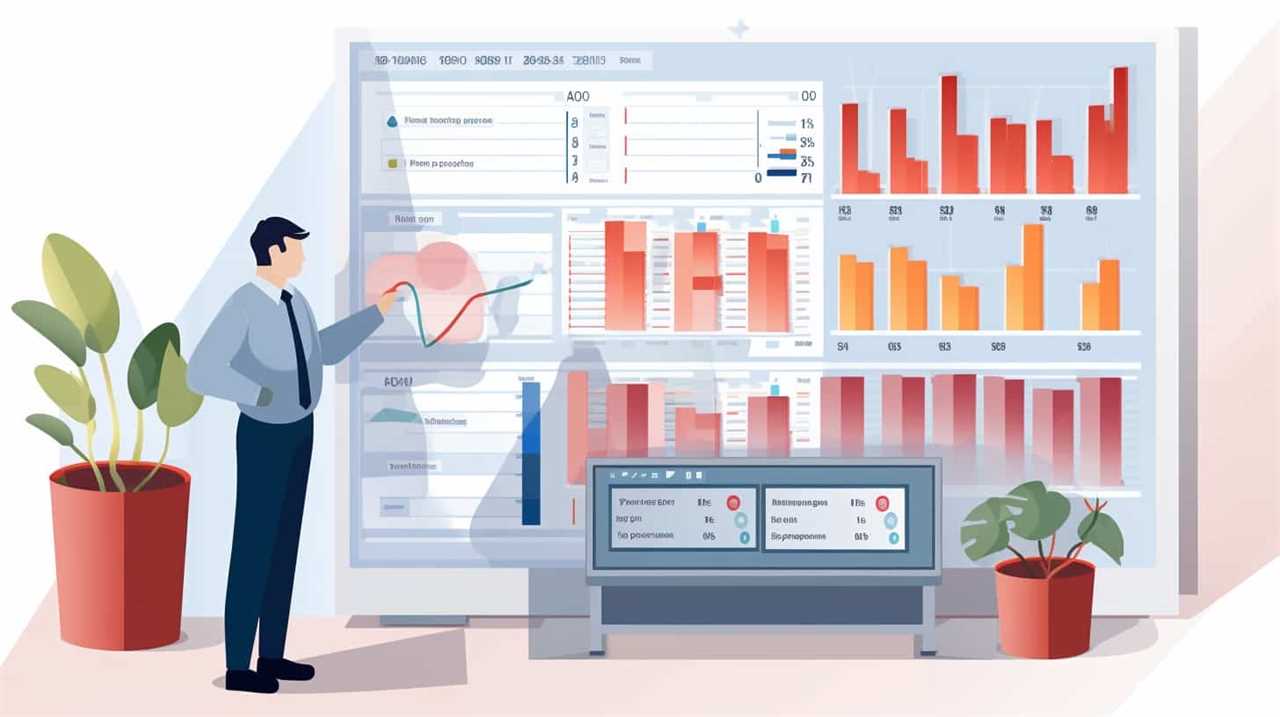
Financial feasibility is a key consideration when implementing heat pump technology. The initial investment costs may be higher compared to traditional heating and cooling systems, but the long-term savings in energy costs can offset these expenses. Additionally, there may be incentives and tax benefits available for adopting energy-efficient technologies.
By carefully evaluating the financial feasibility and potential cost savings, commercial buildings can make informed decisions about implementing heat pumps.
Transitioning into the subsequent section about ‘considerations for implementing heat pumps in commercial buildings’, it’s important to understand the various factors that need to be taken into account.
Considerations for Implementing Heat Pumps in Commercial Buildings
Our team has identified several key considerations when implementing heat pumps in commercial buildings. These considerations are crucial for maximizing efficiency and overcoming challenges that may arise during the implementation process. Here are the top three considerations:

-
Building Envelope:
Ensuring the building’s envelope is properly insulated and sealed is essential for efficient heat pump operation. A well-insulated building minimizes heat loss and reduces the workload on the heat pump system. -
System Sizing:
Properly sizing the heat pump system is crucial for optimal performance. Undersized systems may struggle to meet the heating or cooling demands, while oversized systems can lead to inefficiencies and increased energy consumption. Conducting a thorough load analysis is essential to determine the appropriate system size. -
Control Strategies:
Implementing effective control strategies can significantly enhance heat pump performance. Utilizing advanced control algorithms and integrating the heat pump system with other building systems, such as lighting and occupancy sensors, allows for better coordination and energy savings.
Frequently Asked Questions
How Much Does It Cost to Install Heat Pump Technology in a Commercial Building?
The cost analysis of installing heat pump technology in commercial buildings depends on various factors such as building size, existing infrastructure, and energy consumption. However, the return on investment can be significant in terms of energy savings and reduced operational costs.
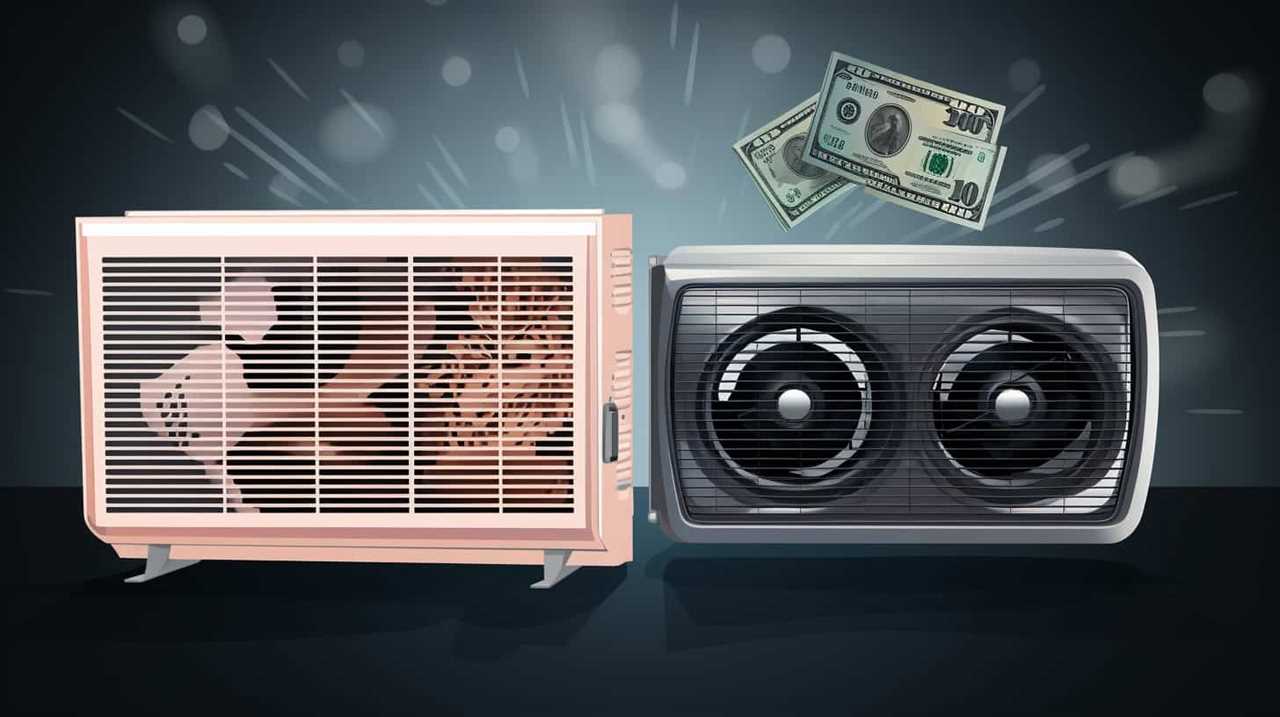
What Is the Expected Lifespan of a Heat Pump System in a Commercial Setting?
Heat pump systems in commercial settings typically have an expected lifespan of 15-20 years. Regular maintenance is crucial to ensure optimal performance and longevity. Properly maintaining these systems can help reduce energy costs and minimize downtime.
Are There Any Government Incentives or Rebates Available for Implementing Heat Pumps in Commercial Buildings?
Government support and financial incentives are available for implementing heat pumps in commercial buildings. These incentives aim to encourage the adoption of energy-efficient technologies and reduce greenhouse gas emissions.
Can Heat Pumps Be Used in All Types of Commercial Buildings, Regardless of Size or Age?
Yes, heat pumps can be used in all types of commercial buildings, regardless of size or age. Heat pump technology in residential buildings offers various benefits, such as energy efficiency, cost savings, and environmental friendliness.
How Does the Efficiency of Heat Pump Systems Compare to Traditional HVAC Systems in Commercial Buildings?
When comparing energy efficiency, heat pump systems outperform traditional HVAC systems in commercial buildings. However, integrating heat pumps in older buildings poses challenges due to infrastructure limitations and retrofitting requirements.

Conclusion
In conclusion, heat pump technology is revolutionizing the way commercial buildings approach HVAC systems. With its energy efficiency, cost savings, and environmental benefits, heat pumps are a game changer for the industry.
As we look towards the future, it’s clear that heat pump technology will continue to play a vital role in commercial real estate. So, why settle for outdated systems when heat pumps offer a more sustainable and comfortable solution?







